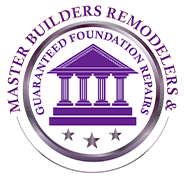5 Tips for Foundation Drainage
Keeping water drained away from home foundations is important for two main reasons. First, if there is living space on the other side, the owner will want it to stay dry. Good drainage is the first step toward accomplishing that, then waterproofing. Second, soils supporting a foundation need to stay at a consistent moisture level to prevent settlement, heave, or differential movement.
Here are a few things to keep in mind
- Moisture: There are two zones of subsurface moisture: the aeration zone (where both water and air exist) and the saturation zone. Generally, the saturation zone is everything below the water table, which is the level at which water rises to in a well. The saturation zone is seldom an issue in residential construction—soil moisture is the concern.
- Loss of soil moisture: Soil moisture beneath a foundation is lost in a triangular configuration, so the deepest dry area is just outside the edge of the foundation and the ground beneath the middle of the slab remains saturated. Differential drying or differential amounts of moisture in the soil can create problems, especially in expansive soils.
- Surface drainage: Controlling surface water is critical to controlling soil moisture beneath the foundation. The ground surface should slope away from the house at between ½ and 1 inch per foot for at least 6 feet—10 feet is better. Be careful of poorly compacted backfill, though, because that will soon mean that the surface will slope back toward the house.
- Gutters: Downspouts should discharge on sloping surfaces at least 6-10 feet from the foundation. Where that isn’t possible, downspouts should discharge into drained catch basins.
- Finally, remember that it is much easier to do foundation drainage right in the first place than to repair it later.
Think you may have a Drainage or Foundation Problem?, Call us 817-469-1090 For Your Free Evaluation
